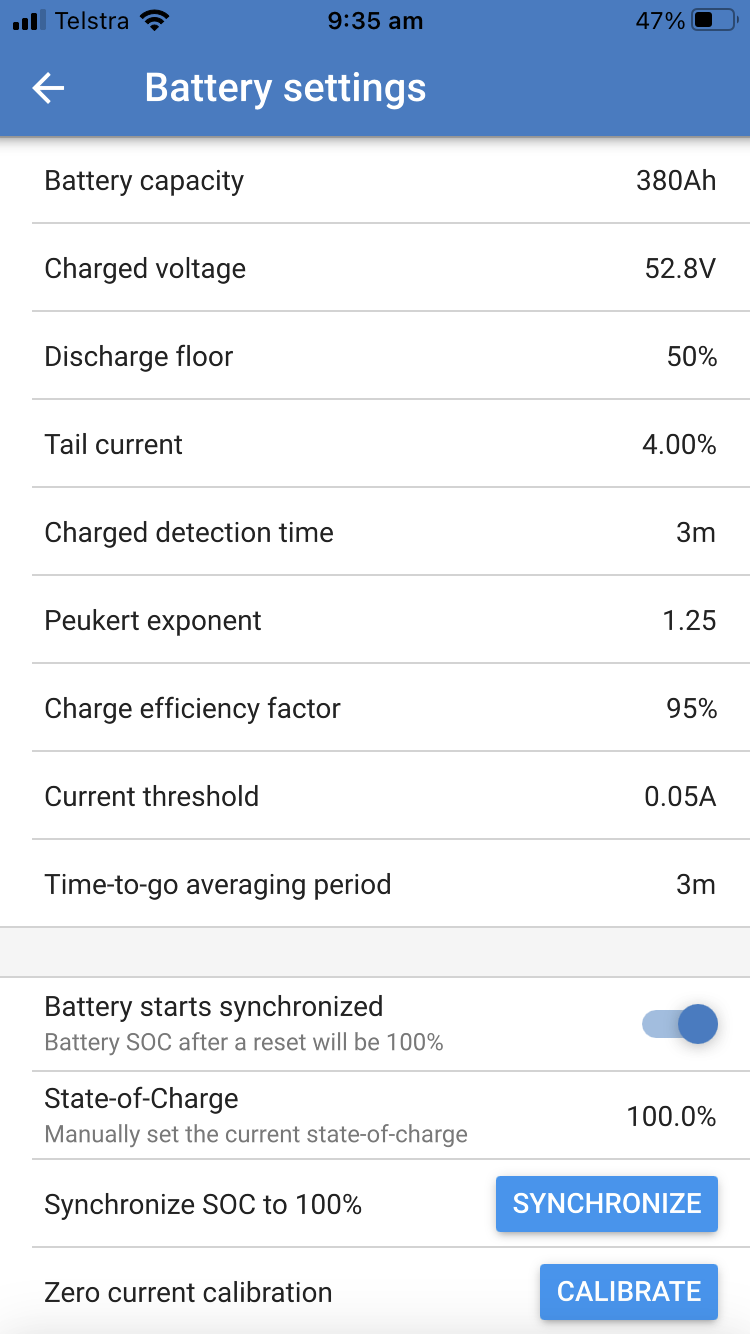Am I right that due to the Peukert formula the Smart Shunt reported state of charge (SOC) for low discharge rates will fall more slowly than the reported Ah discharged would suggest?
I added a SmartShunt 500A/50mV to keep better tabs on my sealed lead acid battery bank.
I've noted most nights SOC does not drop as much as Ah discharged suggests it should. Overnight discharge rate is low (~2 A from a 380 Ah battery bank), so in the vicinity of C200 rather than C20.
e.g. I see Ah suggest SOC should have dropped 6-7% when the SOC indicator drops by only 3-4%.
Current settings:

Looking at my battery's specifications the Peukert Exponent works out to 1.13, somewhat lower than the default value of 1.25. These are telco/data centre backup SLA batteries and a Peukert value of 1.13 seems to gel (pun intended) with such batteries (not accounting for any temperature or age factors).
Might try a Peukert exponent of 1.13 and see what effect that has.
As an aside, working out the Peukert exponent made me recheck my battery's specifications, and the rated Ah is at the C10 rate with discharge down to 1.80 V/cell.
The C20 Ah rating is 11.5% higher than that.
So based on a C20 rating my battery bank would be 424 Ah, not 380 Ah. Interesting.
